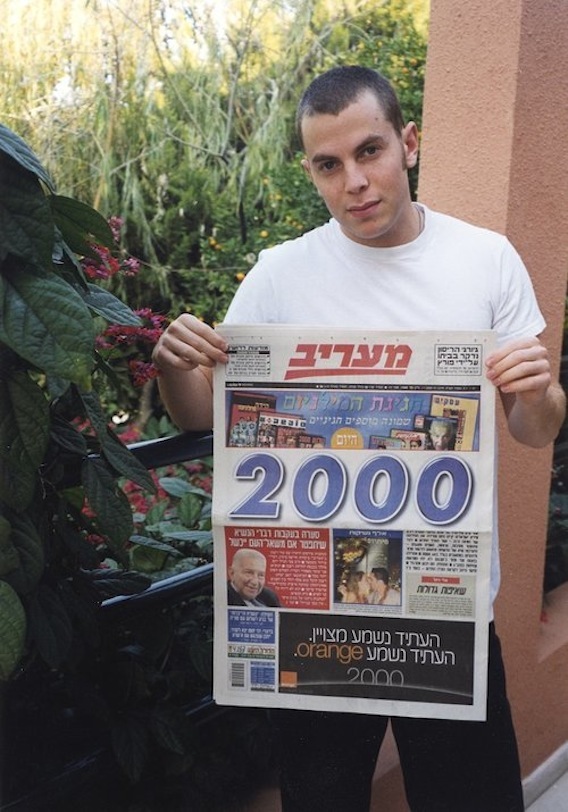HEADLINES (1990-2016 Edition)
2018
SPRING/BREAK Art Show, NYC. Curator: Naomi Lev
American-Soviet Pressure on Iraq to withdraw, Yediot, 1990, C-Print, Sizes vary
Blowout, Clinton Wins, New York Newsday, 1992, C-Print, Sizes vary
2000, Maariv, 2000, C-Print, Sizes vary
Terrorists Attack New York, Pentagon, Los Angeles Times, 2001, C-Print, Sizes Vary
Hurricane (Wall Street), Maariv, 2008, C-Print, Sizes vary
Got Him! (Bin Laden), New York Post, 2011, C-Print, Sizes Vary
The Death of a Peace Symbol (Nelson Mandela), Yediot, 2013, C-Print, Sizes vary
Terrorist Attacks Rock Paris, On Sunday, 2015, C-Print, Sizes vary
HEADLINES (1990-2016 Edition)
Text by: Naomi Lev
How are headlines chosen? What appears in the news, and what does not? According to Noam Chomsky, thought control in a democratic society exists in the way the major media, the national press, television, and so on, manage how we perceive reality; what we hear, what we see, and what we read. This is of course propaganda. In Manufacturing Consent: The Political Economy of Mass Media, Chomsky writes: “The mass media serve as a system for communicating messages and symbols to the general populace. It is their function to amuse, entertain, and inform, and to inculcate individuals with the values, beliefs, and codes of behavior that will integrate them into the institutional structures of the larger society. In a world of concentrated wealth and major conflicts of class interest, to fulfill this role requires systematic propaganda.” And he continues: “Structural factors are those such as ownership and control, dependence on other major funding sources (notably, advertisers), and mutual interests and relationships between the media and those who make the news and have the power to define it and explain what it means.”
For the past 28-years, Shony Rivnay has been photographing his son with the day’s newspaper front page and headline. These headlines usually emphasize historic events, catastrophes, a crisis, or significant change. The photos, taken in different parts of the world imitate the migration of news, our bodies reflecting the movement that is possible today and our means of transporting information.
Today’s travelers bring their knowledge, culture and history to any place they arrive, crossing borders of information through the physical body as well as through the web, while also digesting the complexity of the place they arrive or engage in.
In the photos we see a child, a young man, and then an adult. Documenting this person’s physical evolution records the different phases in life and how we bear these changes through our body. We initially see a glowing naïve child whose smile and gaze bring joy to the viewer. As he grows, his gaze changes becoming more grounded and sober yet charged and challenged by life’s events. Events that are perceived not only through the written word but also through direct experience. Photographed as a child in his grandmother’s home in a small town in Israel, in his childhood home in New Jersey and New York, as a soldier in Tel Aviv, as a tourist in Tokyo, London and Paris, and as a grown man in Los Angeles and Spain– this is the face of a contemporary being who meets the world. But what do these eyes really see? How does the piece of paper he holds affect his life, his seeing, and his future? This project deals with assimilation and migration, observation and documentation.


